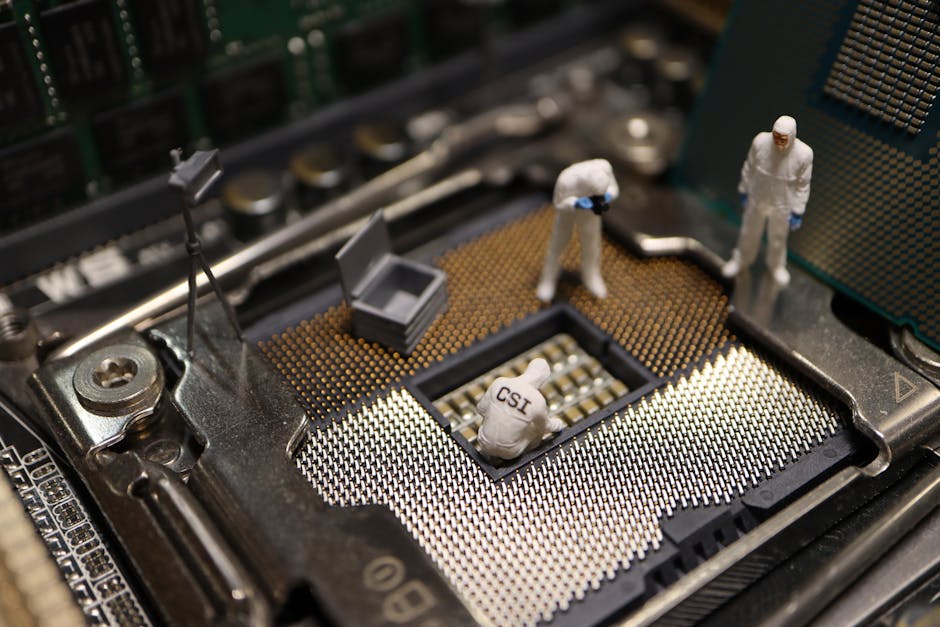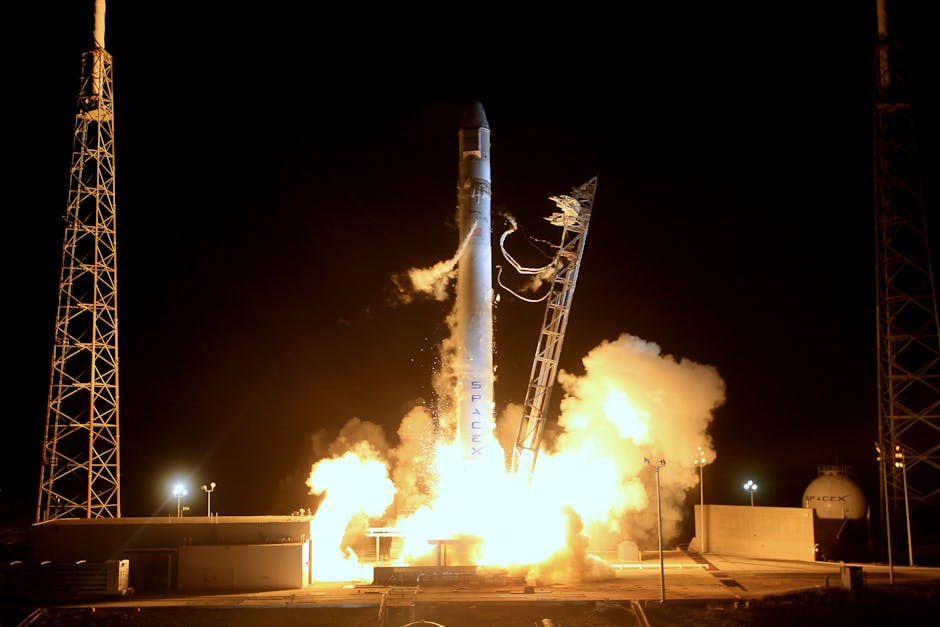The modern marvel of naval engineering, the aircraft carrier, serves as a mobile airbase, projecting air power across vast oceans. These warships have evolved dramatically since their inception, transforming from simple platforms for balloons to sophisticated, nuclear-powered supercarriers. Understanding the capabilities and strategic importance of these floating fortresses is crucial. Join us as we explore the history, technology, and operational dynamics that define the modern aircraft carrier and its role in global power projection.
Table of Contents
- The Evolution and Strategic Importance of Aircraft Carriers
- Essential Attributes and Mission Sets of Modern Aircraft Carriers
- Variations in Aircraft Carrier Types and Their Unique Roles
- Supercarriers and the Evolution of Aircraft Carrier Design
- Historical Milestones in Aircraft Carrier Development
- The Impact of Aircraft Carriers in World War II and Beyond
- Modern Aircraft Carrier Technology and Operations
- Flight Deck Operations and Launch/Recovery Systems
More from me
An aircraft carrier is essentially a mobile airbase, a warship equipped with a full-length flight deck and extensive hangar facilities designed to support, arm, deploy, and recover a wide array of aircraft. These vessels serve as the centerpiece of naval fleets, often referred to as carrier battle groups, enabling a naval force to project air power far beyond its homeland without reliance on distant airfields. From their humble beginnings in the early 20th century, deploying tethered reconnaissance balloons from wooden decks, aircraft carriers have transformed into nuclear-powered supercarriers, capable of carrying dozens of advanced fighters, strike aircraft, military helicopters, Airborne Early Warning & Control (AEW&C) platforms, and Unmanned Combat Aerial Vehicles (UCAVs). While larger fixed-wing aircraft, such as airlifters and bombers, have been launched from aircraft carriers, they typically do not land on these ships due to the limitations of the flight deck.
The Evolution and Strategic Importance of Aircraft Carriers
The modern aircraft carrier, complete with its onboard aircraft and sophisticated defensive systems, represents the most complex and potent weapon system ever devised. Their tactical agility, mobility, independence, and diverse operational capabilities make aircraft carriers the focal point of contemporary naval warfare. They wield significant diplomatic influence through deterrence, command of the sea, and air supremacy. Since World War II, the aircraft carrier has superseded the battleship as the flagship of naval fleets, fundamentally altering naval combat from traditional gunfire engagements to beyond-visual-range air strikes. This shift underscores the aircraft carrier’s pivotal role in modern naval strategy, emphasizing its capacity to project power and maintain dominance in maritime theaters.
In addition to their tactical advantages, aircraft carriers offer substantial strategic benefits. Operating in international waters, they avoid infringing upon territorial sovereignty, thereby minimizing diplomatic complications or escalating conflicts due to unauthorized entry. This eliminates the need for land use authorizations from foreign countries, reduces transit times and logistical complexities for aircraft, and significantly enhances the time available for operations in the combat zone. The aircraft carrier, therefore, serves as a versatile and indispensable asset, capable of responding swiftly and effectively to a wide range of global security challenges, solidifying its status as a cornerstone of naval power projection and strategic influence.
However, there is no universally accepted definition of an “aircraft carrier,” and modern navies employ various types, sometimes categorized as sub-types or distinct aviation-capable ships. Classifications often depend on the types of aircraft they support and their designated operational roles. As Admiral Sir Mark Stanhope, former First Sea Lord of the Royal Navy, succinctly stated, “Countries that aspire to strategic international influence have aircraft carriers.” Echoing this sentiment, former United States Secretary of State Henry Kissinger famously remarked, “An aircraft carrier is 100,000 tons of diplomacy.” These statements highlight the significant role these vessels play in international relations and military strategy.
As of August 2025, there are approximately 50 active aircraft carriers operated by fifteen different navies worldwide. The United States leads with 11 large nuclear-powered CATOBAR (Catapult Assisted Take-Off Barrier Arrested Recovery) fleet carriers, each capable of carrying around 80 aircraft, possessing a combined deck space more than double that of all other nations combined. The US Navy also operates nine amphibious assault ships, primarily used as helicopter carriers, but capable of supporting up to 20 V/STOL (Vertical/Short Takeoff and Landing) jet fighters, similar in size to medium-sized fleet carriers. These figures underscore the United States’ dominance in naval aviation and its capacity to project power globally through its extensive aircraft carrier fleet.
China, the United Kingdom, and India each operate two STOBAR/STOVL aircraft carriers equipped with ski-jump flight decks. China is also in the process of commissioning a third carrier with catapult capabilities. France and Russia each operate a single aircraft carrier with a capacity of 30 to 60 fighters. Italy operates two light V/STOL carriers, while Spain, Turkey, and Iran each operate one V/STOL aircraft-carrying assault ship. Helicopter carriers are also in use by Japan (4, two of which are being converted to operate V/STOL fighters), France (3), Australia (2, previously also owned 3 light carriers), Egypt (2), South Korea (2), China (3), Thailand (1), Brazil (1) and Iran (1). Future aircraft carriers are under construction or in planning by China, France, India, Italy, Russia, South Korea, Turkey and the United States.
Essential Attributes and Mission Sets of Modern Aircraft Carriers
Speed is a critical attribute for modern aircraft carriers. They must be capable of rapid deployment anywhere in the world and possess sufficient speed to evade detection and targeting by enemy forces. A high speed also enhances the “wind over the deck,” which increases the lift available for fixed-wing aircraft to carry fuel and ammunition. To effectively evade nuclear submarines, aircraft carriers should maintain a speed exceeding 30 knots (approximately 35 mph or 56 km/h). This speed capability is essential for both offensive and defensive operations, ensuring the carrier’s survivability and effectiveness in a dynamic and contested maritime environment. The ability to quickly reposition and respond to emerging threats is a key factor in the strategic value of aircraft carriers.
Aircraft carriers are among the largest types of warships, primarily due to the extensive deck space required for flight operations and aircraft maintenance. The size of these vessels is directly proportional to their operational capabilities, influencing the number and types of aircraft they can carry, as well as the volume of supplies and personnel they can accommodate. This substantial size, however, also presents challenges in terms of maneuverability and vulnerability, necessitating a robust defensive escort to protect the aircraft carrier from potential threats. The sheer scale of these ships underscores their significance as symbols of naval power and their capacity to project force across vast distances.
A modern aircraft carrier must be capable of performing an increasingly diverse range of missions. These include diplomacy, power projection, rapid crisis response, land attack from the sea, serving as a sea base for helicopter and amphibious assault forces, anti-surface warfare (ASUW), defensive counter air (DCA), and humanitarian aid and disaster relief (HADR). Traditionally, an aircraft carrier is expected to excel in both power projection and sea control missions. This versatility makes the aircraft carrier an invaluable asset in a wide spectrum of operational scenarios, from maintaining regional stability to responding to natural disasters. The ability to adapt to various roles enhances the strategic utility of these vessels in a complex and unpredictable global environment.
An aircraft carrier must efficiently operate an air combat group, handling both fixed-wing jets and helicopters, including those designed for short-takeoff/vertical-landing (STOVL) operations. This requires sophisticated coordination and management of flight deck operations, aircraft maintenance, and logistical support. The integration of diverse aircraft types enhances the aircraft carrier’s operational flexibility, allowing it to perform a wide range of missions, from air superiority to close air support. The seamless integration of air assets and shipboard operations is a hallmark of modern aircraft carrier design and operational doctrine, ensuring that these vessels remain at the forefront of naval warfare.
The modern aircraft carrier is more than just a warship; it is a floating city, a symbol of national power, and a versatile tool for diplomacy and military intervention. Its ability to project air power across vast distances, respond to crises, and maintain maritime security makes it an indispensable asset for any nation seeking to exert influence on the global stage. The ongoing evolution of aircraft carrier technology and operational concepts ensures that these vessels will continue to play a pivotal role in shaping the future of naval warfare and international relations.
Variations in Aircraft Carrier Types and Their Unique Roles
Several specialized types of aircraft carriers have evolved to meet specific naval requirements. These include aircraft cruisers, amphibious assault ships, anti-submarine warfare carriers, balloon carriers, escort carriers, fleet carriers, flight deck cruisers, helicopter carriers, light aircraft carriers, seaplane tenders, and utility carriers. The utility carrier, primarily used by the US Navy in the decade following World War II, served to ferry aircraft. Each of these types has unique characteristics and operational capabilities, reflecting the diverse needs of naval forces around the world. The development of these specialized aircraft carriers underscores the adaptability and versatility of this class of warship.
It is important to note that some of these types are not strictly defined as aircraft carriers by all sources. A fleet carrier, for example, is designed to operate with the main fleet, providing offensive capabilities and high speeds. Escort carriers, on the other hand, were developed to defend convoys, being smaller, slower, and carrying fewer aircraft. Light aircraft carriers were fast enough to operate with the main fleet but were smaller in size and had reduced aircraft capacity. These distinctions highlight the varying roles and capabilities of different aircraft carrier types, each tailored to specific operational requirements and strategic objectives.
The Soviet aircraft carrier Admiral Kuznetsov was designated a “heavy aircraft-carrying cruiser,” a legal distinction intended to circumvent the Montreux Convention, which restricted the passage of aircraft carriers through the Turkish Straits. These ships, while comparable in size to large fleet carriers, were designed for independent deployment or with escorts. In addition to supporting fighter aircraft and helicopters, they possessed strong defensive weaponry and heavy offensive missiles, equivalent to a guided-missile cruiser. This unique configuration reflects the Soviet Union’s strategic priorities and its approach to naval power projection.

Modern aircraft carriers are typically categorized into four main types based on how aircraft take off and land: CATOBAR (Catapult-Assisted Take-Off Barrier-Arrested Recovery), STOBAR (Short Take-Off Barrier-Arrested Recovery), STOVL (Short Take-Off Vertical-Landing), and helicopter carriers. CATOBAR carriers generally accommodate the largest, heaviest, and most heavily armed aircraft. STOBAR carriers are limited to lighter fixed-wing aircraft with smaller payloads. STOVL carriers support STOVL aircraft, which have traditionally had limited payloads and lower performance, though newer models like the F-35B offer improved capabilities. Helicopter carriers, as the name suggests, operate primarily with helicopters, though some can also support fixed-wing aircraft.
The categorization of aircraft carriers by launch and recovery methods underscores the diverse approaches to naval aviation. Each method offers distinct advantages and disadvantages, influencing the types of aircraft that can be operated, the operational capabilities of the carrier, and the overall strategic role it plays in naval operations. The ongoing development of new technologies and aircraft designs continues to shape the evolution of aircraft carrier types, ensuring that these vessels remain at the forefront of naval innovation.
Supercarriers and the Evolution of Aircraft Carrier Design
The term “supercarrier” is not an official designation but is commonly used by the media to describe larger, more advanced aircraft carrier types. It is often used when comparing carriers of different sizes and capabilities, both current and historical. The term first appeared in The New York Times in 1938, referring to the Royal Navy’s HMS Ark Royal, which had a length of 800 feet, a displacement of 22,000 tons, and was designed to carry 72 aircraft. Since then, aircraft carriers have consistently grown in size and capabilities, reflecting advancements in technology and the evolving demands of naval warfare.
Aircraft carriers have evolved significantly in terms of defense systems, sensors, electronic warfare capabilities, propulsion systems, range, launch and recovery systems, and the number and types of aircraft they can carry, as well as the number of sorties they can fly per day. These advancements have transformed the aircraft carrier from a relatively simple platform into a highly complex and versatile weapon system, capable of projecting power across vast distances and dominating maritime theaters. The ongoing pursuit of enhanced capabilities continues to drive innovation in aircraft carrier design and technology.
Currently, China (Type 003) and the United Kingdom (Queen Elizabeth class) operate carriers with full load displacements between 80,000 and 85,000 tonnes and lengths from 280 to 320 meters, which are often described as “supercarriers.” France is also developing a new aircraft carrier (PANG) with a full load displacement of 80,000 tonnes, which will also be considered a supercarrier. The largest supercarrier in service as of 2024 is with the US Navy, with a full load displacement of around 100,000 tons, a length of 337 meters, and capabilities that surpass any other class. These figures highlight the scale and sophistication of modern supercarriers, which represent the pinnacle of naval engineering.
In the past, the US Navy proposed an aircraft carrier concept with a length of 1,310 feet and a displacement of 500,000 tons full load, estimated to cost $828 million in 1976 dollars. While this concept never materialized, it illustrates the ambitious visions that have driven aircraft carrier development over the years. The continuous pursuit of larger, more capable vessels reflects the strategic importance of these warships in projecting power and maintaining maritime dominance. The evolution of aircraft carrier design is a testament to human ingenuity and the ongoing quest for naval superiority.
Various systems of identification symbols have been used for aircraft carriers and related ship types, including pennant numbers used by the Royal Navy, Commonwealth countries, and Europe, as well as hull classification symbols used by the US and Canada. These systems provide a standardized method for identifying and classifying aircraft carriers, facilitating communication and coordination among naval forces. The ongoing development and refinement of aircraft carrier technology and operational concepts ensure that these vessels will continue to play a pivotal role in shaping the future of naval warfare and international relations.
Historical Milestones in Aircraft Carrier Development
The evolution of the aircraft carrier began with the 1903 advent of heavier-than-air fixed-wing airplanes, culminating in Eugene Burton Ely’s first experimental take-off from the deck of the USS Birmingham in 1910. Just two months later, Ely successfully landed his Curtiss Pusher airplane on a platform on the armored cruiser USS Pennsylvania in San Francisco Bay. These early experiments laid the groundwork for the development of aircraft carriers as viable naval platforms. The subsequent advancements in aircraft technology and naval engineering transformed the aircraft carrier into a dominant force in maritime warfare.
On May 9, 1912, Commander Charles Samson made the first take-off from a ship while underway, flying a Short Improved S.27 biplane from the deck of the Royal Navy’s HMS Hibernia. This event provided the first practical demonstration of the aircraft carrier for naval operations at sea. Following this milestone, seaplane tender support ships emerged, with the French Foudre of 1911 leading the way. These early developments highlighted the potential of naval aviation and paved the way for the construction of purpose-built aircraft carriers.
During World War I, the Imperial Japanese Navy ship Wakamiya conducted the world’s first carrier-launched air raid on September 6, 1914, attacking Austro-Hungarian and German vessels in Jiaozhou Bay. The first attack using an air-launched torpedo occurred on August 2, when Flight Commander Charles Edmonds launched a torpedo from a Short Type 184 seaplane from HMS Ben-my-Chree. These early combat operations demonstrated the offensive capabilities of aircraft carriers and their potential to reshape naval warfare. The lessons learned from these engagements influenced the design and deployment of aircraft carriers in subsequent conflicts.
The first carrier-launched airstrike was the Tondern raid in July 1918, where seven Sopwith Camels launched from HMS Furious attacked and damaged the German airbase at Tondern, destroying two zeppelin airships. The first landing of an airplane on a moving ship was by Squadron Commander Edwin Harris Dunning on HMS Furious in August 1917. HMS Furious was later modified with a second flight deck, but turbulence issues led to the development of vessels with a flush deck. In 1918, HMS Argus became the world’s first carrier capable of launching and recovering naval aircraft. These innovations marked significant advancements in aircraft carrier technology and operational capabilities.
The Washington Naval Treaty of 1922 limited the construction of new heavy surface combat ships, leading to the conversion of existing ships into aircraft carriers, such as USS Langley, the Lexington-class carriers, and Japanese Akagi and Kaga. Specialist carrier evolution was underway, with navies ordering purpose-built aircraft carriers like Japanese Hōshō, HMS Hermes, and Béarn. These ships, known as fleet carriers during World War II, revolutionized naval warfare by shifting the focus from traditional naval guns to the superior range and effectiveness of carrier-launched aircraft. The aircraft carrier had become a pivotal element of naval strategy, capable of projecting power and influencing the outcome of conflicts.
The Impact of Aircraft Carriers in World War II and Beyond
The aircraft carrier dramatically altered naval warfare in World War II, as air power became a significant factor. The advent of aircraft as focal weapons was driven by their superior range, flexibility, and effectiveness compared to naval guns. The versatility of the carrier was demonstrated in November 1940, when HMS Illustrious launched a long-range strike on the Italian fleet at Taranto, incapacitating three battleships at a cost of two torpedo bombers. This operation highlighted the potential of mobile aircraft carrier strikes.
World War II in the Pacific Ocean saw clashes between aircraft carrier fleets, with the Japanese attack on Pearl Harbor demonstrating the power projection capability of a large carrier force. The Doolittle Raid in April 1942, where USS Hornet launched 16 B-25 Mitchell bombers to strike mainland Japan, further showcased the aircraft carrier’s strategic reach. However, the sinking of HMS Glorious by German battleships in 1940 illustrated the vulnerability of carriers compared to traditional capital ships. These events underscored the evolving role of aircraft carriers in naval warfare.
The increasing importance of naval aviation led nations to create numerous aircraft carriers to provide air superiority. This led to the development of ‘light’ carriers and escort aircraft carriers, such as USS Bogue, which were often converted from merchant ships to provide anti-submarine air support. Light aircraft carriers, like USS Independence, represented a larger, more militarized version of the escort carrier. The UK 1942 Design Light Fleet Carrier was designed for quick construction and served the Royal Navy during the war, influencing post-war aircraft carrier designs. Emergencies also spurred the creation of unconventional aircraft carriers, such as CAM ships, which could launch a single fighter aircraft to defend convoys.
Before World War II, international naval treaties limited the size of capital ships, including aircraft carriers. Post-war, aircraft carrier designs increased in size to accommodate larger aircraft. Modern Nimitz-class carriers have a displacement nearly four times that of World War II-era USS Enterprise, yet their aircraft complement is roughly the same due to the increasing size and weight of military aircraft. Today’s aircraft carriers are so expensive that their loss could have significant economic and military consequences for operating nations.
Several changes were made to aircraft carriers after 1945, including the invention of the angled flight deck, jet blast deflectors, and optical landing systems. The angled flight deck, invented by Royal Navy Captain Dennis Cambell, allowed for simultaneous launch and recovery. Jet blast deflectors protected aircraft and handlers from jet blast, while optical landing systems facilitated precise landing angles for jet aircraft. These innovations, along with increased carrier size and the use of nuclear reactors for power, have transformed the aircraft carrier into the modern capital ship of naval fleets, capable of projecting power and maintaining maritime dominance across the globe.
Modern Aircraft Carrier Technology and Operations
Modern navies treat aircraft carriers as capital ships, a role previously held by battleships. This shift occurred during World War II due to the increasing importance of air power, driven by the superior range and effectiveness of carrier-launched aircraft. Post-war, carrier operations continued to grow in size and importance, leading to larger and more capable designs. Some of these larger carriers, dubbed “supercarriers,” displacing over 75,000 tons, have become the pinnacle of carrier development. Amphibious assault ships, such as the Wasp and Mistral classes, serve to carry and land Marines, operating a large contingent of helicopters and VSTOL aircraft.
The modern aircraft carrier’s threatening role extends to asymmetric warfare, akin to gunboat diplomacy of the past. Carriers facilitate quick and precise projections of overwhelming military power into local and regional conflicts. However, lacking the firepower of other warships, aircraft carriers are vulnerable to attack by ships, aircraft, submarines, or missiles. Therefore, they are typically accompanied by a carrier strike group, providing protection, supplies, and additional offensive capabilities. This carrier-centric naval strategy underscores the aircraft carrier’s central role in modern maritime operations.
Some military analysts argue that modern anti-ship weapons systems, such as torpedoes, missiles, and nuclear-armed ballistic missiles, have made aircraft carriers and carrier groups too vulnerable for modern combat. Carriers can also be vulnerable to diesel-electric submarines, as demonstrated by incidents involving German and Swedish submarines during naval exercises. These vulnerabilities highlight the ongoing need for advanced defensive systems and tactics to protect aircraft carriers from evolving threats. The debate over the survivability of aircraft carriers in modern warfare continues to shape naval strategy and technology development.
Aircraft carriers vary in size and length depending on their intended role and aircraft complement. The size of the carrier has evolved over time and among different navies to meet the demands of naval aviation in various global climates. Regardless of size, the ship must house its aircraft, with space for launching, storing, and maintaining them. Space is also required for the crew, supplies, and propulsion systems. US and French aircraft carriers are notable for using nuclear reactors to power their systems and propulsion, providing extended operational range and endurance.
The flight deck is the top of the aircraft carrier, where aircraft are launched and recovered. The island, housing the funnel, air-traffic control, and the bridge, is located on the starboard side. The constraints of the flight deck influence the weight, type, and configuration of the aircraft that can be launched. Assisted launch mechanisms are used for heavy aircraft, while CATOBAR is common on US Navy fleet carriers. STOVL is used by other navies for its cost-effectiveness. The busy nature of the flight deck necessitates a hangar storage several decks below, with aircraft transported via elevators. Munitions are stored on the lower decks, often below the waterline for safety. These design features reflect the complex engineering and operational requirements of modern aircraft carriers.
Flight Deck Operations and Launch/Recovery Systems
As “runways at sea,” aircraft carriers have a flat-top flight deck for launching and recovering aircraft. Aircraft launch forward into the wind and are recovered from astern. The size of the vessel limits runway length, affecting take-off procedures. Shorter runway lengths require aircraft to accelerate more quickly, necessitating thrust boosts, vertical velocity components, or reduced take-off loads. The differing deck configurations influence the flight deck’s structure. The launch assistance a carrier provides is strongly related to the types of aircraft embarked and the carrier’s design. These factors shape the operational capabilities and strategic role of the aircraft carrier.
There are two main philosophies for keeping the deck short: adding thrust to the aircraft, such as using a Catapult Assisted Take-Off (CATO-), and changing the direction of the airplanes’ thrust, as in Vertical and/or Short Take-Off (V/STO-). Each method has advantages and disadvantages. Catapult Assisted Take-Off Barrier Arrested Recovery (CATOBAR) uses a steam- or electric-powered catapult to accelerate conventional aircraft to flying speed. Short Take-Off Barrier Arrested Recovery (STOBAR) depends on increasing the net lift on the aircraft, often using a ski-jump. Short Take-Off Vertical-Landing (STOVL) uses thrust vectoring, and Vertical Take-Off and Landing (VTOL) aircraft are designed for vertical take-off using high degrees of thrust vectoring. The choice of launch system depends on the types of aircraft and the operational requirements of the aircraft carrier.
| Aircraft Carrier Type | Launch/Recovery Method | Examples |
|---|---|---|
| CATOBAR | Catapult-assisted take-off, barrier-arrested recovery | US Navy Nimitz-class, French Charles de Gaulle |
| STOBAR | Short take-off, barrier-arrested recovery | Chinese Liaoning, Indian Vikramaditya |
| STOVL | Short take-off, vertical landing | US Navy Amphibious Assault Ships, UK Queen Elizabeth-class |
| Helicopter Carrier | Vertical take-off and landing | Japanese Izumo-class, French Mistral-class |
We also Published
RESOURCES
- Aircraft carrier – Wikipedia
- I swam to an abandoned Soviet aircraft carrier of “heavy aviation …
- Everything We Know About China’s ‘Unsinkable’ Fujian Aircraft Carrier
- Hear me out: Aircraft Carriers : r/foxholegame
- USS Midway Aircraft Carrier | San Diego Museum | San Diego Tours …
- The Nimitz-class aircraft carrier USS Carl Vinson (CVN 70) conducts …
- I flew to Texas to watch bull riding on an aircraft carrier during …
- USS Hornet Museum
- An Outbreak of Covid-19 on an Aircraft Carrier | New England …
- The Church Isn’t a Cruise Ship; It’s an Aircraft Carrier – JD Greear …








0 Comments